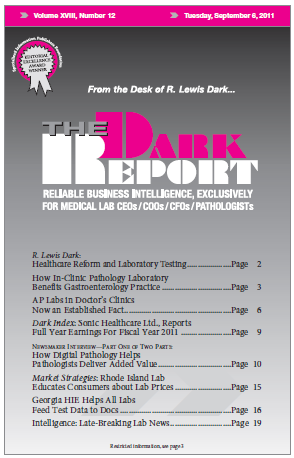“Pathologists have the opportunity to take on a new clinical role as the integrator of all that digital pathology information, in combination with the patient’s other clinical data collected from a wide variety of sources.” —Dirk G. Soenksen, M.S., M.B.A., Founder and CEO, Aperio CEO Summary: During the 1990s, the pathology profession was exploring ways …
How Digital Pathology Helps Pathologists Deliver Added Value Read More »
To access this post, you must purchase The Dark Report.


